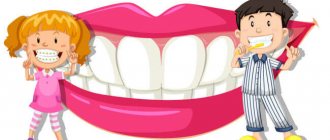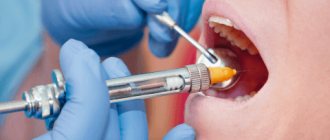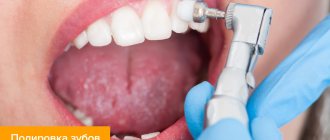Stages of sedation Types When treating children Possible complications Indications Preparation for the procedure Contraindications Anesthesia Alternatives
There are few people in the world who are not afraid of a visit to the dentist. Against the backdrop of such a widespread phobia, calls are increasingly being made to undergo treatment under sedation, without pain. What is it and is this method as safe as they say?
Dental treatment under anesthesia in adults is carried out in rare cases, more often in hospitals. But sedation is more common. This method causes inhibition of the nervous system to reduce panic and stress during the procedure. There is contact with the doctor, the patient is able to respond to stimuli. With this method of anesthesia, the patient breathes on his own, all his reflexes are preserved. This is the main difference between sedation and anesthesia, in which the degree of inhibition reaches such a level that consciousness turns off, reflexes are not preserved, and the patient does not respond to physical and verbal stimuli. The main purpose of anesthesia is to put the patient into a state in which he does not feel anything.
The main goal of sedation is not to harm the patient’s health, so before the procedure it is necessary to do a full examination of the body and obtain a conclusion from a general practitioner and anesthesiologist.
Sedation will help:
- relax during an unpleasant or painful procedure;
- perform local anesthesia without tension and fear;
- provide comfort, moral and physical;
- create a calm environment for the dentist to work.
Anesthesia in dentistry and its difference from sedation
General anesthesia is an alternative to local anesthesia. It involves completely shutting down a person's consciousness to cause loss of sensitivity during treatment. Dental treatment under anesthesia in adults is usually carried out in cases where it is impossible to use other types of anesthesia. Sometimes they resort to using sedation.
Sedation is often confused with anesthesia, but in fact it is an intermediate link between general anesthesia and dental treatment with anesthesia. In this case, the person is in a state of half-asleep, on the border of sleep and consciousness, while at the same time the contact between the patient and the doctor is maintained.
The similarity between sedation and anesthesia is that they are carried out by an anesthesiologist using the same drugs, but the consequences of sedation are milder, since the dosage is much less.
When general anesthesia is administered, the patient falls into deep sleep. He is unconscious. Dental treatment under anesthesia is rarely practiced, since the number of contraindications and risks of complications in this case exceeds the number of prerequisites for it. If possible, it is better to avoid it, as it has a toxic effect on the human body, especially on the heart, cardiovascular and nervous system. Local anesthesia copes with pain relief no worse, most importantly, without serious consequences.
Types of sedation in dentistry
There are quite a few ways to administer relaxing drugs, but only a few of them are used in dental clinics:
- Inhalation
. The most common mind control technique. The advantages of dental treatment under sedation through inhalation: quick effect, the process is easy to control, consciousness is restored in a very short period of time. The most common use is nitrous oxide. It has a relaxing effect, reduces motor activity and has some analgesic properties. Subject to the rules of supply and percentage of gases, there are practically no side effects. - Injection
. The drug is administered once, as an injection or gradually, through an intravenous infusion system. The most well-known drugs are profopol and medazolam. Their hypnotic effect allows dental treatment to be performed while you sleep, while maintaining basic reflexes and spontaneous breathing. Recently, dexmedetomidine has been increasingly used because it does not lower blood pressure. - Oral medication
. If the patient is afraid of the needle, but calmly takes the pills, they can be used. - Intranasal dispersion
. An anesthetic is sprayed into the nasal passages. So the drug, through the taste buds, immediately enters the brain. Quick effect, bioavailability, central action and ease of use make sprays very popular.
Indications for treatment under anesthesia
- Dentophobia/stomatophobia (panic fear of dentistry in both children and adults);
- Very low pain threshold;
- Strongly expressed gag reflex;
- Individual intolerance to drugs included in local anesthesia, allergic reactions;
- Mental abnormalities that exclude the possibility of contact between the doctor and the patient, when the patient is unable to adequately respond to the doctor’s actions;
- A large amount of work, or a very long treatment time;
Sedation in pediatric dentistry
Up to 50% of children
[1] hide dental problems due to fear of treatment. This affects their quality of life and oral health both in childhood and when they grow up. Therefore, the use of mind control measures when providing dental care to children is justified, subject to strict adherence to rules and regulations. Most often, medicated sleep during dental treatment in children is achieved using nitrous oxide, but there are studies that have confirmed the effectiveness of the use of other medications. It is worth remembering that sedation should be used only when no other method of dental treatment for a child does not work. This will help avoid harmful consequences.
How is treatment performed under general anesthesia and its types?
To be able to carry out treatment under general anesthesia and guarantee the safety of patients, a dental clinic must have a number of characteristics, namely:
- Have a license for anesthesiology and resuscitation, as well as the right to use potent drugs;
- Have a staff of anesthesiologists and resuscitators, have all the necessary equipment and equipment;
- Set up a temporary room for the patient until the general anesthesia wears off.
Contraindications to sedation
Like any medical procedure, depression of consciousness has contraindications. There are very few of them. The only absolute contraindication is myasthenia gravis (muscle weakness). The remaining states are relative. These are drug or alcohol intoxication, hypotension, a full stomach, a disorder of consciousness that prevents interaction with the patient, pregnancy, a condition after an acute heart attack/stroke. An opinion on the possibility of carrying out this procedure can only be issued by a general practitioner and an anesthesiologist.
The choice of method may also be limited. Thus, inhalation methods are contraindicated for sinusitis and other diseases of the upper respiratory tract. The doctor must know about all diseases in order to select the appropriate drug for a particular one in order to use medicinal sleep in dental treatment without consequences. That is why it is important to treat teeth in a clinic with modern technical facilities. Typically, such dentists employ experienced anesthesiologists and have equipment for first aid.
Expert opinion
Emir Romanovich Omerelli
Maxillofacial surgeon, implantologist
Experience: more than 13 years
To exclude the development of complications, before starting treatment it is necessary to conduct a thorough examination: ECG, X-ray of the lungs, consultations, if necessary, with a therapist, cardiologist and other doctors, collection of blood tests. All this is important to fully assess the patient’s condition and select the optimal type and drug of anesthesia.
They are as follows:
- Mask (inhalation), which is carried out by the patient inhaling a mixture of oxygen and anesthetic gases through a mask. This type of anesthesia is often given to children;
- Intravenous. By introducing anesthetic drugs into the blood.
Dental procedures that can be performed under general anesthesia:
- Removal of a tooth cyst;
- Removal of several wisdom teeth;
- Multiple dental implants.
Consequences of sedation in dentistry
Specific problems with the use of mind control drugs depend on the route of administration and the mechanism of action of the drugs.
At the beginning of the procedure, you may experience increased activity, physical restlessness, talkativeness, and increased sociability.
A common symptom is an obsessive cough. This problem can be stopped by reducing the dose of the drug. Complications after sedation can appear both immediately and in a delayed period.
Possible short-term complications
- Breathing disorders (slow breathing, lack of oxygen);
- problems with hemodynamics (drop in blood pressure, irregular heart rhythm);
- depression of the central nervous system;
- intestinal dysfunction, vomiting.
Delayed symptoms
- Development of psychoses;
- hallucinatory syndrome;
- paralysis.
Is sedation dangerous? No, if it is carried out by an experienced doctor who has undergone special training, and the clinic is equipped with everything necessary to eliminate the consequences. But this is not a magic pill that can be prescribed to everyone without thinking about the consequences.
Possible complications during general anesthesia
There are many side effects of general anesthesia. Sometimes, even in the absence of contraindications, the body's reaction to an anesthetic can be unpredictable, so anesthesia is always a risk. The following complications may occur:
- Decreased cognitive function of the brain;
- Difficult recovery from anesthesia, prolonged confusion;
- Dizziness;
- Nausea and urge to vomit;
- Strong headache;
- Muscle pain;
- Injury to the oral cavity (tongue, teeth, lips);
- Respiratory tract infection;
- Severe brain damage, death (the percentage of cases is minimal).
Types of anesthesia for painless dental treatment
Depending on the complexity of the upcoming dental intervention, the doctor can offer the client three options for pain relief:
Application. The anesthetic drug is applied to a gauze pad and applied to the area of the upcoming dental intervention. This method is not able to eliminate severe pain, therefore it is relevant only when helping children, for example, when removing milk units before injecting the medicine.- Infiltration. It is a full-fledged injection, but the medicine is not injected very deeply. The medicine “turns off” peripheral nerve endings. This is enough to painlessly eliminate caries (including deep caries), pulpitis and other diseases.
- Conductor. This type of anesthesia affects both small nerve branches and large clusters, trunks and canals of nerves. Having given an injection, the doctor immediately makes half of the jaw insensitive. This allows you to painlessly perform complex surgical operations, removal, and treat inflammatory pathologies of the oral cavity.
Treatment prices
Dental procedures performed under anesthesia are quite expensive. It consists of a consultation with an anesthesiologist, the qualifications of all doctors involved in the process, the type of anesthesia, the drug administered, the prestige of the clinic and is calculated in proportion to the treatment time. In Moscow, treatment under anesthesia will cost from 15,000 rubles per hour. In the regions of Russia the price is lower, ranging from 10,000 rubles per 1 hour.
It is very important to inform patients about all the nuances of treatment using general anesthesia, so that the person can assess the risks and decide whether to undergo treatment under anesthesia or choose safe local anesthesia. Treatment and removal of teeth under anesthesia can really be effective, the main thing is not to forget about the restrictions and contraindications. No dentist can guarantee the absolute success and successful outcome of this method. In addition, careful preparation of the patient for general anesthesia, exclusion of contraindications, and strict adherence to the doctor’s prescriptions are absolutely necessary.
Why treat baby teeth?
Even a seemingly insignificant spot can cause the development of caries, pulpitis and spread to neighboring teeth. All this can provoke attacks of acute pain.
Pain and discomfort in the presence of dental pathologies lead to the fact that the child begins to avoid unpleasant sensations - chewing on only one side of the jaw. This can create an incorrect bite.
Diseases of primary teeth negatively affect the rudiments of molars. In this case, permanent teeth grow with defects and will need to be constantly treated.
Difference between general and local dental anesthesia [1]
The condition when only local pain sensitivity in the part where the intervention is performed is “turned off” is called local anesthesia. Unlike general anesthesia, with such anesthesia the person remains conscious, can communicate with the doctor, perform the necessary actions (open or close the mouth, sit under a special lamp).
General anesthesia is also used in dentistry. But general anesthesia for dental treatment is rarely used and only when necessary, for example, in complex surgical cases or for certain diseases, when the patient’s condition does not allow him to undergo treatment under local anesthesia. When and what anesthesia should be used in a particular case, the doctor decides on an individual basis.
Indications for general anesthesia
Some cases in practical surgery and dentistry are a direct indication for the use of general anesthesia during therapeutic procedures. However, even if they are available, the use of anesthesia raises many doubts and questions about the general health of the patient, which may have contraindications. To eliminate all risks, the patient undergoes a certain examination of the body, based on the results of which the doctor decides on the advisability of this type of anesthesia.
The following types of dental treatment can be performed under sedation or general anesthesia:
- extraction of 3 molars, which are located in the jaw bone in an extremely complex manner, which involves drilling and crushing tooth tissues and roots, which have a complex and tangled structure;
- bone grafting with immediate implantation;
- the need for prosthetics or implantation of several dental units;
- one-stage removal of several teeth;
- elimination and treatment of a large volume of carious lesions on the dental surface;
- injuries of the maxillofacial apparatus, requiring a large scale of restoration work;
- treatment of advanced forms of pulpitis or widespread periodontitis;
- surgeries on the temporomandibular joint;
- a burdened allergy history, which does not allow treatment with local anesthetics;
- the patient has a pronounced gag reflex;
- insurmountable fear of dental procedures, accompanied by characteristic sounds, smells and tactile sensations;
- the patient has severe mental illness (schizophrenia, mental retardation);
- children under 3 years of age, which is due to inadequate patient contact and the presence of a large volume of dental work;
- genetic pathologies (autism, Down syndrome);
- patients with somatic pathologies in a compensated state to prevent exacerbation, for example, hypertension or neurasthenia;
- epilepsy.
In cases of treatment in government institutions with a hospital, you will always be persuaded to undergo treatment under anesthesia followed by hospitalization, since this is strictly regulated by the internal regulations of hospitals.
In paid non-state clinics, all these types of treatment will be carried out only under sedation and without hospitalization, since there is no need to extend the stay and duration of treatment.
The list of indications is quite large, but it may have limitations. Whether it is possible to treat teeth under anesthesia in a particular case will be determined only by an experienced anesthesiologist, who must be on the staff of specialists in a modern dental clinic that provides comfortable and effective service.









